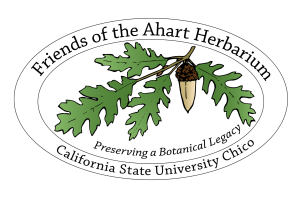Herbaria: Collectively Saving Plant and Fungal Biodiversity
Barbara Thiers
Thursday, April 15th, 6:00–7:00pm via Zoom
Click here to view the presentation
For the past almost six centuries, scientists have been documenting the plants and fungi of the world through herbaria. The basic preparation of the specimens that are housed in an herbarium has changed relatively little over time. But the invention of this simple technology was a key innovation in transforming the study of these organisms from a minor subdiscipline of medicine into an independent scientific endeavor.
Evidence suggests that herbaria as a tool for botanical research and education arose in northern Italy in the early 16th century. At this time, other world cultures were building upon centuries of plant knowledge that surpassed that of Europe in volume, detail, and continuity. However, none of these other cultures appear to have created herbaria. The herbarium tradition spread to almost every country around the world, developing in a manner: at first Europeans, explorers and emigrants, made plant collections for study by scientists back home, but as emigrants become citizens and a national identity is formed, in-country herbaria became part of the scientific infrastructure for interpreting the history and natural resources of the new nation.
The herbarium has made it possible for scientists to characterize the plants and fungi that grow in faraway places and to understand their diversity on a global scale. The men and women collectors and curators responsible for the wealth of herbaria we have today (about 3300 herbaria holding an estimated 393 million specimens), are diverse in national heritage, education and social status. The geographic, taxonomic, and temporal breadth of their legacy allows us to understand the diversity of the world’s vegetation in the past and present, and to predict its future. Herbaria still serve their original function – to document the occurrence of plants and fungi and provide a reference for their identification and characterization. However, recent technological advances that facilitate the study of life at both the molecular level and on a global scale can be applied to herbarium specimens to help address some of the most critical problems we face today. New ways of sharing information allow herbaria demonstrate the importance of plants and healthy ecosystems to an audience far beyond the scientific community.
Barbara M. Thiers is director of the William and Lynda Steere Herbarium at the New York Botanical Garden, president of the Society for the Preservation of Natural History Collections, and vice president of the Natural Science Collections Alliance.


